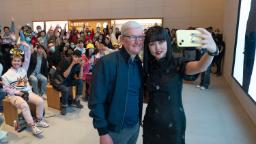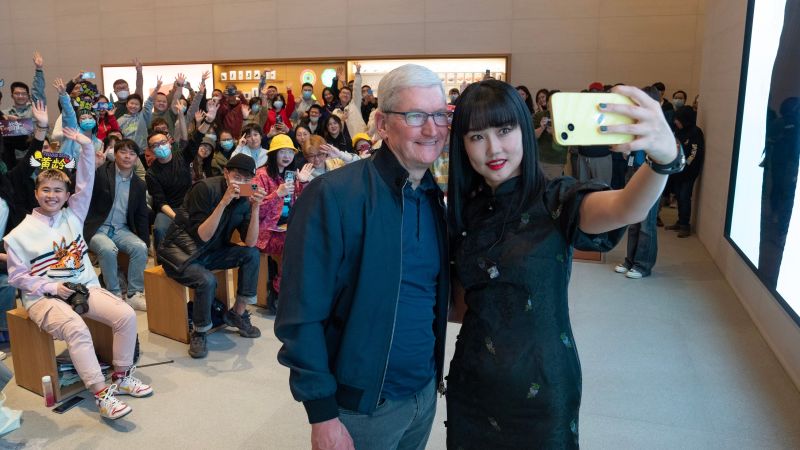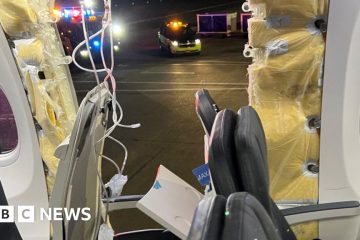
Hong Kong
CNN
—
Apple
(AAPL) CEO Tim Cook gave a show of support for China as a market and manufacturing base during a visit to Beijing Saturday, even as trade and tech sector tensions escalate between the United States and the world’s second-largest economy.
Apple and China had “grown together” over the past three decades, Cook told the government-organized China Development Forum, adding that he was thrilled to be back in the country, which only reopened its borders this year after abandoning its strict zero-Covid policy. The last time Cook visited China was in 2019.
“We have a very large supply chain in China. We also have a thriving App Store,” the Apple chief was quoted as saying in state-run China Daily.
Cook’s visit has raised eyebrows in some quarters, given the ongoing tech battle between the United States and China and reports that Apple has been looking to India as a potential alternative production base.
On Friday, Cook had posted a picture of himself smiling with customers and staff at the Apple store in the shopping district of Sanlitun on China’s Twitter-like social media site Weibo.
That post came just a day after Shou Zi Chew, the CEO of TikTok was grilled in a five-hour hearing before a Congressional committee in Washington, where US lawmakers remain convinced the Chinese-made social media app represents an urgent threat to national security.
China’s state media was quick to seize on the apparent contrast between the two CEO’s experiences.
“TikTok CEO was under siege at the US hearing, while Apple CEO was enthusiastically welcomed by people at its flagship Chinese store. This shows that China is the one that is actually practicing fair and free trade,” the state-run Global Times quoted one netizen as saying.
The Biden administration has demanded that the Chinese owners of TikTok sell their share of the company or face a ban from the United States, the app’s most important market. China’s commerce ministry said Thursday that a forced sale of TikTok would “seriously damage” global investors’ confidence in the United States.
The US has concerns about the company’s data collection practices, and these have been exacerbated by the popularity of TikTok and other Chinese apps. Of the 10 most popular free apps on Apple’s US store, four were developed with Chinese technology: TikTok, shopping app Temu, fast fashion retailer Shein and video editing app CapCut, which like TikTok is also owned by ByteDance.
Apple meanwhile has reportedly been rethinking the extent of its ties with China.
The company’s supply chains were disrupted by China’s harsh coronavirus rules and there have been violent protests over wages at the world’s largest iPhone assembly factory at Foxconn’s campus in China’s Henan province.
Amid these problems, and wider trade disagreements between Washington and Beijing, Apple has reportedly been looking at India as a potential alternative manufacturing hub for the iPhone 14.
However, many analysts say that even if Apple can add diversity to its supply base it is likely to continue to depend on China for a long time yet.
Cook said in an earnings call last year that India was a “hugely exciting market” and “a major focus” for Apple that recorded “very strong double digits year over year,” indicating its high interest to expand production in the South Asian country.
While the rising US-China tensions have led to suggestions the world’s two largest economies could “decouple,” recent data shows trade between them hit a record high in 2022.
Bilateral goods trade between the countries rose to $690.6 billion last year, according to official US data.
Exports to China increased by $2.4 billion to $153.8 billion, while imports of Chinese products rose by $31.8 billion to $536.8 billion according to the US Bureau of Economic Analysis.
The data suggests that the idea of “decoupling,” or reducing mutual reliance in a range of areas, is much more evident in policy discussions in Washington rather than on-the-ground trade reality.
Note:- (Not all news on the site expresses the point of view of the site, but we transmit this news automatically and translate it through programmatic technology on the site and not from a human editor. The content is auto-generated from a syndicated feed.))



